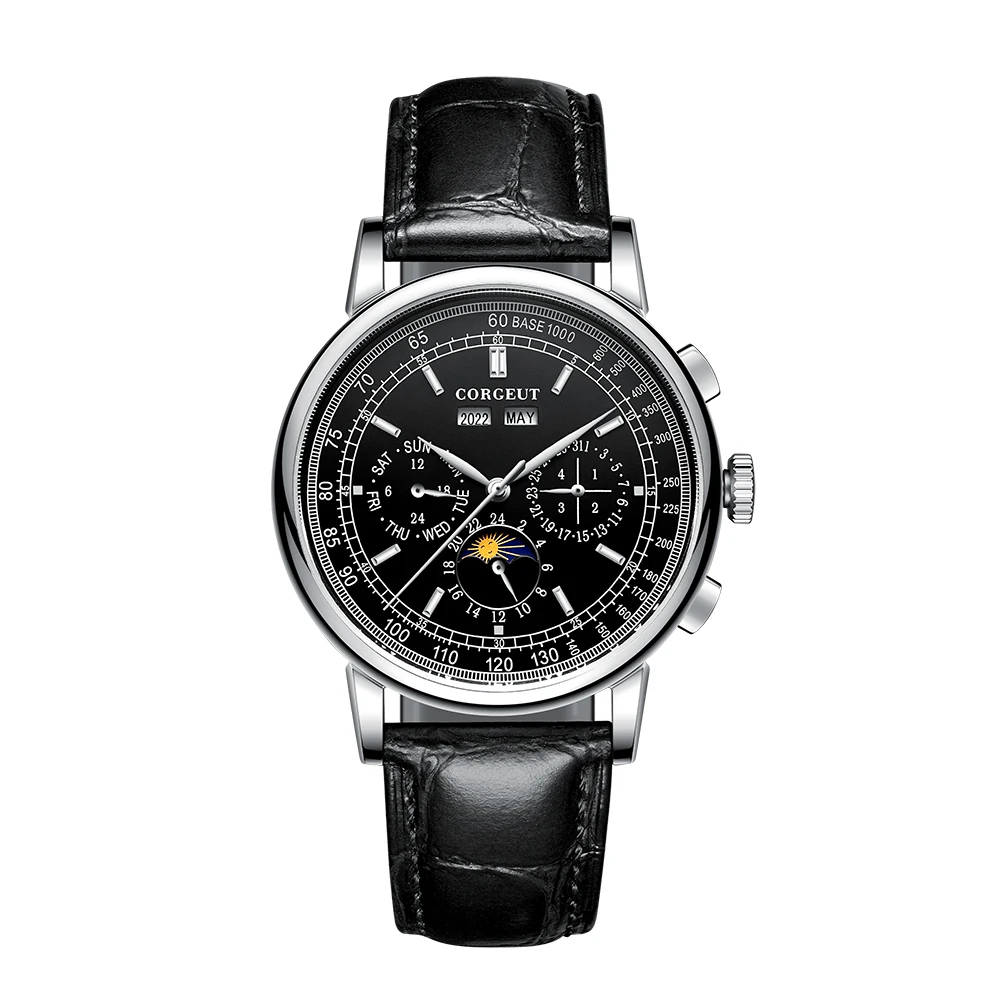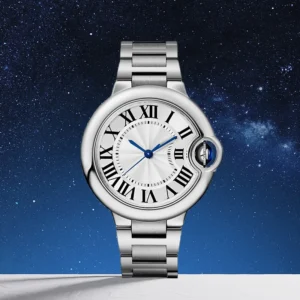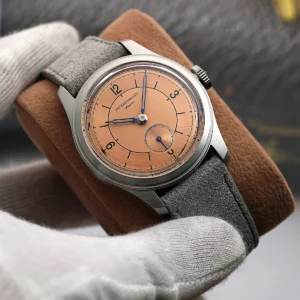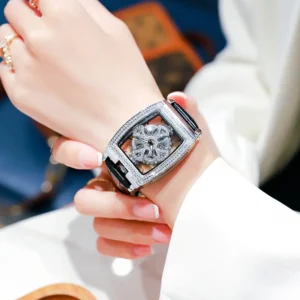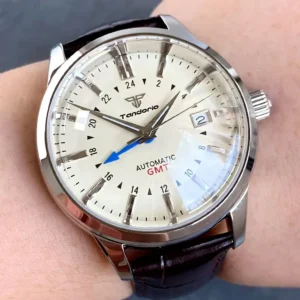Introduction
A dress watch stands as the quintessential symbol of elegance and sophistication in the world of horology. From their origins as pocket watches adapted for the wrist, these refined timepieces have evolved while maintaining their core purpose: to complement formal attire with understated elegance.
Today’s watch enthusiast faces an intriguing dilemma when selecting a dress watch. Should one embrace the timeless appeal of classic designs that have graced wrists for generations? Or opt for modern interpretations that blend traditional elegance with contemporary sensibilities?
This choice reflects more than mere preference—it speaks to personal style, lifestyle needs, and the occasions where your timepiece will accompany you. The decision between classic and modern isn’t about right or wrong, but rather finding the perfect expression of your individual taste.
At Sharp Aspect, we celebrate the artistry of fine mechanical timepieces through our “Time. Precision. Heritage.” philosophy. We understand that navigating the nuances between classic vs minimalist dress watches requires thoughtful consideration—which is exactly what this guide aims to provide.
What Defines a Classic Dress Watch?
Classic dress watches emerged from an era when timepieces were essential tools for gentlemen attending formal functions. These watches were designed specifically to complement evening attire and adhere to strict formal dress codes.
The philosophy behind classic dress watches centers on understated elegance—they should enhance, never distract. A truly classic dress watch whispers rather than shouts, conveying refinement through subtle details and exquisite craftsmanship.
Key defining characteristics of classic dress watches include:
- Slim profile and modest case size: Typically ranging from 33mm to 40mm in diameter and under 10mm thick to slide easily beneath a shirt cuff
- Precious metals: Often crafted from gold or platinum, though refined stainless steel is also acceptable
- Minimalist dial designs: Clean faces with simple hour markers (often applied batons or Roman numerals) and minimal text
- Limited complications: Usually time-only or featuring small seconds; date complications are debated among purists
- High-quality leather straps: Most commonly alligator or calfskin in black or brown
- Refined movements: Manual-wind or ultra-thin automatic calibers with emphasis on finishing quality
Classic dress watches represent a timeless aesthetic that transcends trends. Models like the Patek Philippe Calatrava, Jaeger-LeCoultre Reverso, and Vacheron Constantin Patrimony exemplify this approach, maintaining design languages that have remained largely unchanged through decades.
Understanding what defines classic dress watch characteristics helps appreciate why these timepieces continue to hold their appeal despite changing fashion trends. Our classic automatic dress watches collection celebrates these enduring design principles.
Advantages of Classic Dress Watches
Timeless elegance that never goes out of style: Classic dress watches follow design principles that have remained relevant for decades. Their aesthetic appeal doesn’t diminish with changing trends, making them perpetually sophisticated choices.
Unmatched sophistication for formal occasions: Nothing complements black tie attire or formal business suits quite like a traditional dress watch. Their restrained design language speaks of confidence and refined taste without ostentation.
Legacy value and heirloom potential: Classic dress watches often become cherished family heirlooms, passing from one generation to the next. Their enduring design ensures they remain relevant across generations, carrying both monetary and sentimental value.
Expression of traditional watchmaking artistry: These timepieces often showcase traditional decorative techniques and finishing methods that represent centuries of horological expertise. From hand-polished bevels to guilloché dials, classic watches celebrate watchmaking heritage.
Distinctive presence that signals refined taste: Wearing a classic dress watch communicates an appreciation for subtlety and tradition. In a world of increasingly casual attire, these timepieces stand as thoughtful accessories that indicate attention to detail and appreciation for craftsmanship.
The enduring appeal of classic dress watch minimalist styles demonstrates why many enthusiasts gravitate toward these designs. For those particularly drawn to traditional watchmaking, our manual wind dress watches represent the purest expression of classic horological principles.
Challenges of Classic Dress Watches
Despite their many virtues, classic dress watches do present certain limitations:
Limited versatility: Their formal design aesthetic can feel out of place with casual attire, potentially restricting them to special occasions rather than daily wear.
Less robust construction: With emphasis on thinness and elegance over durability, classic dress watches typically offer minimal water resistance (often just 30 meters or “splash resistant”) and may be more susceptible to damage during active wear.
Higher price points: The use of precious metals, high-grade leather, and elaborate hand-finishing techniques often places true classic dress watches at premium price points.
Comfort considerations: Traditional leather straps, while elegant, may not provide the same comfort as modern alternatives, particularly in hot or humid conditions where leather can absorb moisture.
Conservative styling: The restrained aesthetic may feel too traditional for those seeking more expressive or contemporary design elements in their timepieces.
These considerations don’t diminish the appeal of classic dress watches but represent important practical factors when deciding if this style aligns with your lifestyle and preferences.
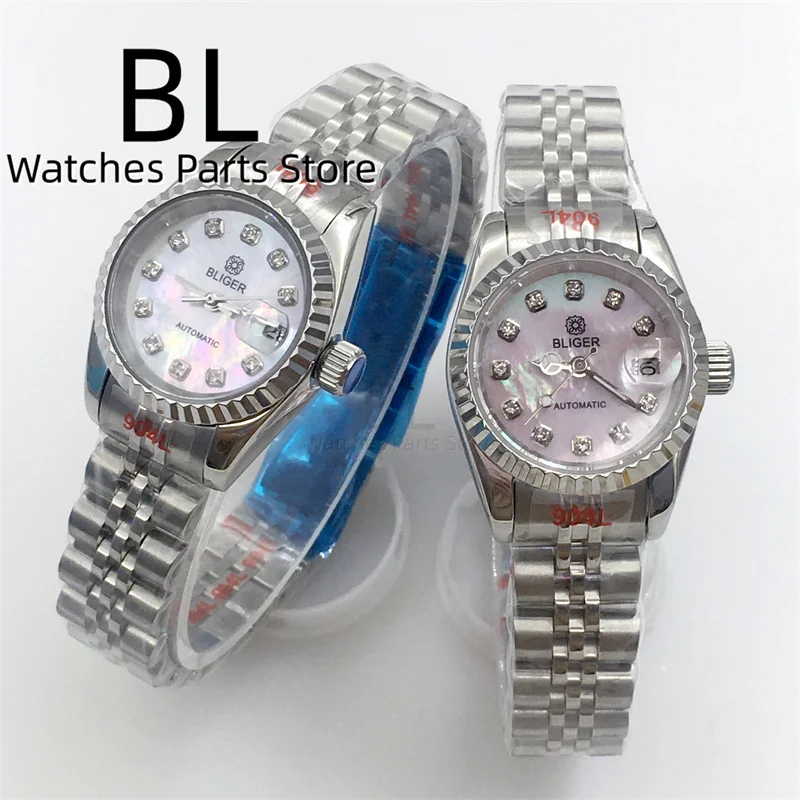
What Defines a Modern Dress Watch?
Modern dress watches represent an evolution of traditional formal timepieces, adapted to contemporary lifestyles and aesthetic preferences. As the rigid boundaries between formal and casual attire have blurred, so too have the defining characteristics of dress watches.
Today’s modern dress watches maintain the essential elegance of their classic predecessors while incorporating elements that enhance versatility, durability, and personal expression. Their design philosophy acknowledges that a dress watch might transition from boardroom meetings to dinner dates within the same day.
Key characteristics that define modern dress watches include:
- Updated proportions: Slightly larger cases (38mm-42mm) with marginally thicker profiles that create more substantial wrist presence
- Diverse materials: Expanded use of stainless steel, titanium, ceramic, and mixed-metal designs alongside traditional precious metals
- More adventurous dials: Introduction of subtle textures, sunburst finishes, varied colors, and contemporary typography while maintaining overall elegance
- Practical complications: Integration of useful features like date displays, power reserve indicators, or GMT functions without compromising refinement
- Versatile strap options: Metal bracelets, integrated designs, and high-tech materials complement traditional leather offerings
- Modern movements: Focus on reliable automatic calibers with improved accuracy and shock resistance
Examples like the Rolex Datejust, Omega De Ville, and Grand Seiko Elegance Collection demonstrate how modern dress watches balance traditional elegance with contemporary sensibilities.
Understanding the defining characteristics classic dress watch designs helps appreciate the evolutionary rather than revolutionary nature of modern interpretations. Our minimalist automatic watches collection showcases contemporary expressions of dress watch design.
Advantages of Modern Dress Watches
Greater versatility across different settings: Modern dress watches effortlessly transition between formal business meetings and casual weekend outings, making them practical choices for varied wardrobes and lifestyles.
Enhanced durability for everyday wear: With improved water resistance (often 50-100 meters), scratch-resistant materials, and sturdier construction, modern dress watches withstand the rigors of daily wear more effectively than their traditional counterparts.
More expressive styling options: Contemporary dress watches offer greater individuality through varied colors, textures, and design elements while maintaining an overall sophisticated aesthetic, allowing wearers to express personal style.
Better value proposition: The use of high-quality stainless steel and modern production techniques often delivers exceptional finishing and performance at more accessible price points compared to precious metal classics.
Advanced technological features: Modern dress watches incorporate innovations in movement technology, case construction, and materials science without sacrificing elegance, resulting in timepieces that perform better while maintaining refined appearances.
The appeal of modern dress watches is well-represented in our comprehensive visual guide dress watch styles. For those interested in exploring contemporary interpretations, our automatic dress watches collection offers excellent examples.
Limitations of Modern Dress Watches
Despite their practical benefits, modern dress watches have potential drawbacks worth considering:
Less pure formal elegance: The concessions made for versatility and functionality sometimes dilute the singular focus on refined elegance that defines classic dress watches.
Susceptibility to design trends: Contemporary elements may feel dated as design preferences evolve, potentially giving modern pieces a shorter aesthetic lifespan than their classic counterparts.
Formality limitations: Some modern interpretations may not meet the strictest dress codes for black-tie events or extremely formal occasions where traditional watches remain the gold standard.
Proportional challenges: Larger case sizes might not fit comfortably under tight shirt cuffs or appear proportionally appropriate on smaller wrists.
Feature compromise: The addition of complications and modern elements can sometimes detract from the clean, focused elegance that defines the essence of a true dress watch.
These considerations highlight that while modern dress watches offer practical benefits, they may require thoughtful selection to ensure they meet your specific needs for formal occasions.
Side-by-Side Comparison: Classic vs. Modern
| Feature | Classic Dress Watch | Modern Dress Watch |
|---|---|---|
| Case Size | 33mm-40mm diameter | 38mm-42mm diameter |
| Case Thickness | Ultra-thin (5-9mm) | Slim to moderate (7-12mm) |
| Primary Materials | Gold, platinum, fine stainless steel | Stainless steel, titanium, ceramic, mixed metals |
| Dial Design | Minimalist, clean, simple markers | More textured, varied colors, contemporary typography |
| Complications | Time-only or small seconds | Date, power reserve, occasionally GMT |
| Strap/Bracelet | Primarily leather (alligator, calfskin) | Leather, metal bracelet, integrated designs |
| Water Resistance | Minimal (30m/”splash proof”) | Moderate (50-100m) |
| Movement | Manual or ultra-thin automatic | Primarily automatic with modern technology |
| Versatility | Formal settings | Formal to business casual |
| Price Range | Generally higher (precious metals) | Broader range (material dependent) |
This comparison illustrates the fundamental differences between these approaches to dress watch design. While classic watches excel in formal purity and traditional elegance, modern interpretations offer practical benefits and contemporary styling that may better suit today’s varied lifestyles.
The evolution represented in this table shows not a replacement of traditional designs but rather an expansion of options that allows each wearer to select the approach that best aligns with their personal style and practical needs.
Our definitive guide minimalist dress watches explores these distinctions in greater detail, helping you understand the nuanced differences between these complementary approaches to elegant timepieces.
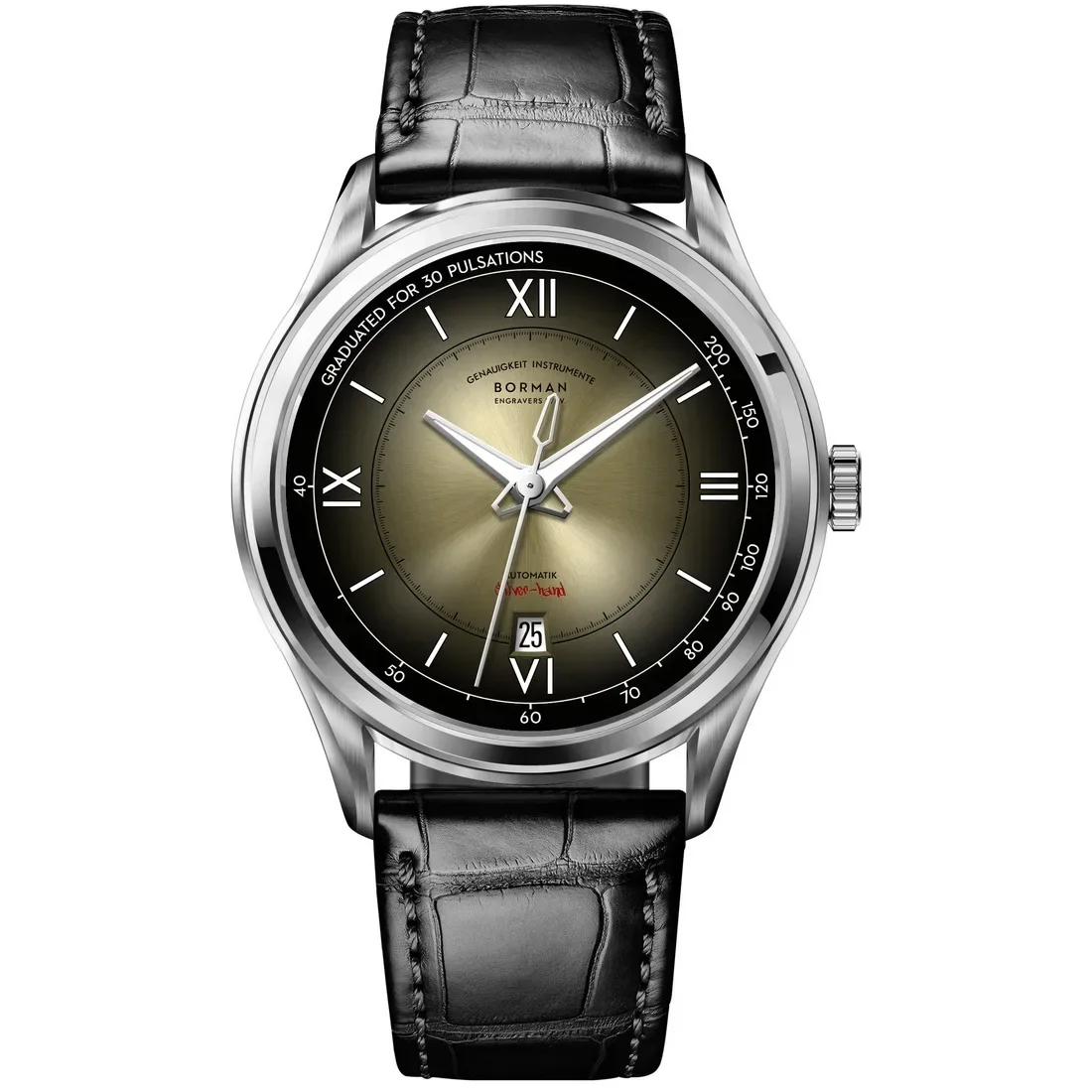
The Evolution of Dress Watch Aesthetics
The journey from pocket watches to today’s diverse dress watch styles reflects broader societal changes in formality and fashion. Early wristwatches maintained the decorative elements of pocket watches before World War I influenced designs toward greater functionality.
The mid-20th century represented the golden age of classic dress watch design, establishing principles that continue to influence watchmakers today. The ultra-slim movements of this period enabled the elegant proportions we associate with traditional dress watches.
As professional environments evolved from strictly formal to business casual, watch designs adapted accordingly. The clear delineation between “work watches” and “formal watches” gradually blurred, giving rise to versatile timepieces suitable for multiple contexts.
Contemporary watchmakers now navigate a fascinating balance—honoring traditional dress watch principles while acknowledging modern lifestyles rarely require strict adherence to formal dress codes. The result is a spectrum of options from purely classic to thoroughly modern, with numerous hybrid approaches between.
This evolution reflects broader cultural shifts in how we define elegance and formality. The design evolution formal watch styles continues today, with our thin automatic dress watches representing a marriage of traditional proportions with modern engineering.
How to Choose Based on Your Personal Style
Finding your ideal dress watch requires honest self-assessment about your lifestyle, preferences, and needs. Consider these questions to guide your decision:
Aesthetic Preference:
* Do you gravitate toward timeless, traditional designs in other aspects of your wardrobe?
* Does the patina and character development of classic materials appeal to you?
* Are you drawn to clean, contemporary interpretations of formal design?
Typical Wardrobe:
* How formal is your daily attire? Full business suits or more casual professional wear?
* Do you frequently attend black-tie or formal events?
* Would your watch need to transition between formal and casual settings?
Wearing Occasions:
* Will this be a special occasion watch or a daily companion?
* Do you need your dress watch to function in various environments?
* How important is durability versus pure aesthetic refinement?
Complementary Accessories:
* What metals appear in your cufflinks, belt buckles, or other accessories?
* Do you prefer coordinated accessories or statement pieces that stand apart?
Practical Considerations:
* Do you prefer the ritual of hand-winding or the convenience of automatic movements?
* How important are features like date display or enhanced water resistance?
* Does case thickness matter for your shirt cuffs and wearing comfort?
Your answers will naturally guide you toward either classic elegance or modern versatility, though many find their perfect match somewhere in the middle of this spectrum.
Styling Your Dress Watch Appropriately
Classic Dress Watch Styling:
* Pair with formal business suits, tuxedos, and traditional formal attire
* Match your leather strap to your shoes and belt (black with black, brown with brown)
* Maintain traditional proportions—the watch should be thinner than the shirt cuff
* Follow the “less is more” principle—avoid wearing multiple bold accessories
* Consider vintage-inspired formal wear to complement traditional watch aesthetics
Modern Dress Watch Styling:
* Works with business suits, smart casual, and elevated everyday attire
* More flexible matching rules—stainless steel can complement various leather goods
* Experiment with contrast between watch style and attire (modern watch with traditional suit)
* Use strap changes to transform the watch for different settings and outfits
* Consider the watch an integrated part of your overall style expression rather than strictly a formal accessory
Understanding classic minimalist watch styling guide principles allows you to create harmonious looks regardless of which style you choose. The key is ensuring your timepiece feels intentional rather than incidental to your overall presentation.
Occasions That Call for Each Type
Ideal Occasions for Classic Dress Watches:
* Black tie events and formal galas where tradition is paramount
* Traditional weddings, especially when participating in the wedding party
* Formal diplomatic functions and high-society gatherings
* Significant milestone celebrations like anniversaries or retirement events
* Business contexts in conservative industries (law, finance, diplomacy)
Ideal Occasions for Modern Dress Watches:
* Contemporary business environments with smart casual dress codes
* Creative professional settings where personal expression is valued
* Semi-formal events with modernized dress codes
* Business travel requiring a versatile timepiece for various meetings
* Situations where you might transition from formal daytime events to evening engagements
This distinction isn’t absolute—many classic watches work beautifully in modern contexts and vice versa. The key is understanding the expectations and atmosphere of each occasion and selecting a timepiece that complements rather than conflicts with the environment.
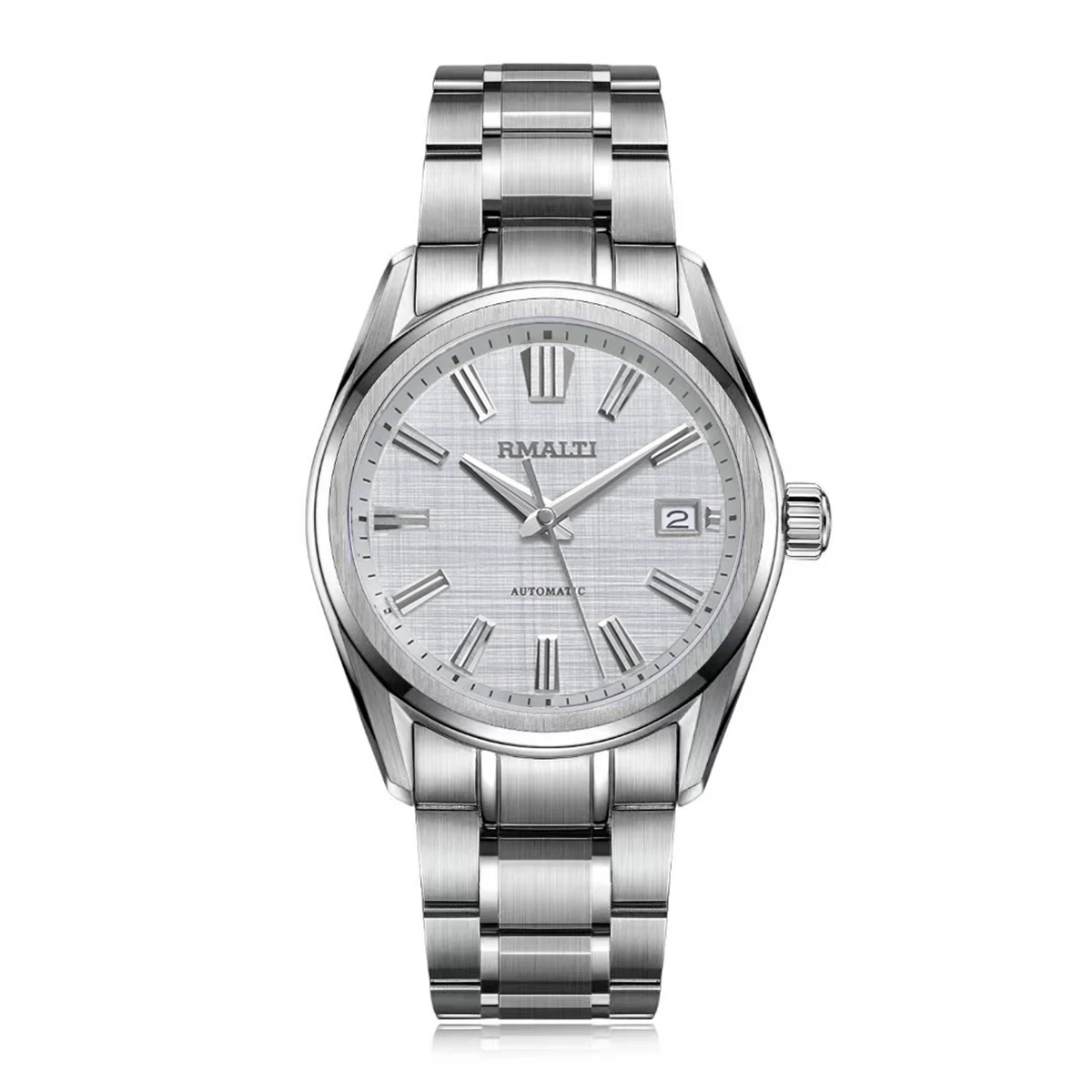
Budget Considerations for Both Styles
The price spectrum for dress watches spans from affordable to extraordinarily exclusive across both classic and modern styles, though certain patterns emerge:
Entry-Level Luxury:
Classic options in this range typically feature stainless steel cases with quality mechanical movements, while modern counterparts might offer more features like improved water resistance and versatile bracelets.
Mid-Tier:
Classic watches at this level begin introducing precious metals (often gold-capped or gold-filled) and higher grade movements. Modern alternatives might feature in-house calibers, more complex case construction, and premium finishing.
High-End:
Classic dress watches frequently showcase solid precious metals, traditional hand-finishing techniques, and heritage prestige. Modern luxury dress watches might combine innovative materials with complex engineering and contemporary prestige.
Material choices significantly impact pricing in both categories—gold classic watches command premium prices, while modern watches in exotic materials like ceramic or titanium may carry higher price tags than their stainless steel counterparts.
Regarding long-term value, classic designs in precious metals from prestigious brands have historically maintained value well, though exceptional modern pieces from respected manufacturers also show strong value retention.
Classic Automatic Dress Watches, Day Date Automatic Watches, Perpetual Calendar Automatic Watches
Price range: $540.60 through $574.60 Select options This product has multiple variants. The options may be chosen on the product pageClassic Automatic Dress Watches, GMT Automatic Watches, GMT Pilot Watches
Price range: $1,240.86 through $1,463.33 Select options This product has multiple variants. The options may be chosen on the product pageClassic Automatic Dress Watches, Thin Automatic Dress Watches
$437.64 Select options This product has multiple variants. The options may be chosen on the product pageClassic Manual Wind Watches, Manual Wind Dress Watches
Price range: $425.50 through $462.50 Select options This product has multiple variants. The options may be chosen on the product page- $104.12 Select options This product has multiple variants. The options may be chosen on the product page
Classic Automatic Dress Watches, GMT Automatic Watches, GMT Dive Watches
Price range: $468.93 through $552.94 Select options This product has multiple variants. The options may be chosen on the product page
Is a Hybrid Approach Possible?
Many contemporary watch designs successfully bridge the divide between classic and modern sensibilities, offering “best of both worlds” solutions for the undecided enthusiast.
These hybrid approaches typically maintain classic proportions and clean aesthetic principles while incorporating subtle modern elements like improved water resistance, contemporary materials, or versatile strap options. The result is a watch that honors horological tradition while acknowledging contemporary lifestyle needs.
Identifying hybrid designs involves looking for watches that:
* Maintain traditional case proportions (36-40mm) with clean dials
* Incorporate modern materials like surgical-grade stainless steel or titanium
* Feature subtle complications that don’t overwhelm the dial
* Offer improved technical specifications without sacrificing elegance
* Provide interchangeable strap options for different settings
These versatile timepieces excel in environments where strict categorization isn’t necessary—they transition seamlessly between traditional and contemporary settings while maintaining an essential elegance that defines all proper dress watches.
For those navigating the spectrum between formal and everyday wear, understanding dress casual watches guide principles can help identify the perfect hybrid solution.
Care and Maintenance Differences
Classic Dress Watch Care:
* Leather strap maintenance is crucial—keep straps dry, rotate regularly, and use leather conditioner occasionally
* Store in watch boxes or winders when not worn to protect delicate movements and prevent leather from drying out
* Handle with extra care, especially with precious metal cases that can scratch or dent
* Servicing is essential every 3-5 years, particularly for vintage or ultra-thin movements
* Keep away from water beyond minimal exposure, regardless of stated water resistance
Modern Dress Watch Care:
* Metal bracelets benefit from occasional cleaning with mild soap and soft brushes to remove accumulated dirt
* Many modern pieces can withstand light water exposure, though should still be dried promptly
* Bracelet adjustments and resizing should be performed by professionals to avoid damage
* Automatic movements with date complications require understanding proper setting procedures
* Modern movements generally maintain similar service intervals (3-5 years) despite improved durability
Both styles require proper care to maintain their appearance and function, though modern watches typically offer more forgiveness for occasional exposure to environmental factors.
Will Your Choice Stand the Test of Time?
Q: Which style is more likely to remain fashionable in the coming decades?
A: Classic dress watches have demonstrated remarkable staying power, with designs remaining largely unchanged for generations. While modern watches incorporate more contemporary elements that may eventually appear dated, those that adhere to fundamental principles of balanced design typically age gracefully as well.
Q: Should investment potential influence my choice?
A: While certain watches do appreciate in value, purchasing primarily as an investment often diminishes the joy of ownership. Choose the watch that brings you personal satisfaction first, with potential value retention as a secondary consideration.
Q: How do I ensure my selection won’t feel outdated quickly?
A: Avoid trendy extremes in either direction. Ultra-traditional watches with very small cases might feel anachronistic in contemporary settings, while aggressively modern designs with unusual proportions may quickly lose their appeal as trends shift.
Q: Does brand heritage matter for longevity?
A: Established brands with long histories typically design with longevity in mind, whether creating classic or modern pieces. Their experience in creating enduring designs often (though not always) translates to timepieces that remain relevant longer.
Ultimately, watches that connect personally with their owners tend to remain cherished regardless of broader fashion trends. The watch that resonates with your personal style is the one most likely to stand your personal test of time.
Making Your Final Decision
When choosing between classic and modern dress watch styles, consider this comprehensive decision framework:
Personal Style Alignment:
– Does the watch reflect your authentic personal aesthetic?
– Will you feel confident and comfortable wearing it?
– Does it complement your existing wardrobe and accessories?
Practical Considerations:
– How frequently will you wear the watch?
– In what environments and occasions will it be used?
– Does the watch’s durability match your lifestyle needs?
Budget and Value:
– Does the price reflect features and quality important to you?
– Are you comfortable with the maintenance requirements?
– Does the watch represent good value in your personal assessment?
Emotional Connection:
– Does the design speak to you on an emotional level?
– Will you enjoy wearing and seeing it on your wrist?
– Does it tell a story or represent values meaningful to you?
Whenever possible, try watches on before purchasing. Photos cannot convey how a watch feels on your wrist or how it catches light throughout the day. The right watch often announces itself through an immediate emotional connection when worn.
Remember that minimalist vs classic dress watches both have their merits—there is no universally “correct” choice, only the choice that’s right for you, your lifestyle, and your personal taste.
FAQs About Classic and Modern Dress Watches
Can a dress watch be worn casually?
Modern dress watches transition more easily to casual settings, particularly those with versatile strap options or metal bracelets. Classic dress watches can work with smart casual attire but may feel out of place with very casual clothing. The key is confident styling and appropriate context.
Is a date function appropriate on a dress watch?
Traditional purists might argue that the cleanest dress watch dials omit date displays, but contemporary standards widely accept subtle date windows as appropriate. The key is integration—the date should be discreetly incorporated without disrupting the dial’s overall harmony.
Are quartz dress watches considered legitimate options?
While mechanical movements carry historical significance and collector appeal, high-quality quartz movements offer practical benefits like accuracy and low maintenance. Many respected watchmakers offer quartz dress watches that maintain excellent design standards and finishing quality.
How important is case thickness for a dress watch?
Case thickness significantly impacts both comfort and formality. Traditionally, the thinner the watch, the more elegant it’s considered, with true dress watches ideally sliding easily beneath a shirt cuff. Modern interpretations allow slightly thicker cases while maintaining appropriate proportions.
Can women wear men’s dress watches or vice versa?
Contemporary watch culture increasingly embraces size as a matter of preference rather than gender. Many women choose traditional men’s dress watches for their proportions and design, while some men prefer smaller cases traditionally marketed to women. The most important factor is how the watch looks and feels on your specific wrist.
Conclusion
The choice between classic and modern dress watches ultimately reflects your relationship with tradition, your lifestyle requirements, and your personal aesthetic. Classic designs offer timeless elegance that has remained relevant through decades of changing fashion, while modern interpretations provide versatility and practical benefits for contemporary lifestyles.
Both approaches celebrate the fundamental principles that define a dress watch: refinement, elegance, and purposeful design. Whether you prefer the pure, distilled essence of traditional watchmaking or the adaptable sophistication of contemporary interpretation, the perfect dress watch awaits.
Remember that the most important quality in any timepiece is how it resonates with you personally. The best watch isn’t necessarily the most expensive or the most technically impressive—it’s the one that feels right on your wrist and complements not just your attire, but your approach to life.
At Sharp Aspect, we appreciate both classic tradition and modern innovation in our curated collection. We believe that every exceptional timepiece tells both the time and a story—the story of its creation, its design philosophy, and ultimately, the story of the person who wears it.

